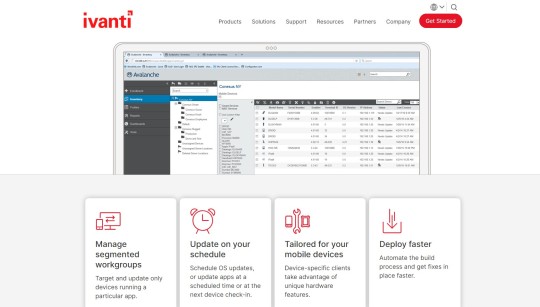Text
Remembering Nokia: A Journey Through Its Iconic History

In the world of mobile technology, few names evoke as much nostalgia and admiration as Nokia. From its humble beginnings as a pulp mill in 1865 to its reign as the world's leading mobile phone manufacturer in the late 1990s and early 2000s, Nokia's journey is nothing short of extraordinary. Let's take a trip down memory lane and explore the remarkable history of this Finnish company.
The Early Years:
Nokia's story began in 1865 in the small town of Nokia, Finland, where Fredrik Idestam established a wood pulp mill. The company expanded into various industries over the years, including paper products, rubber, and cables. However, it wasn't until the 1960s that Nokia made its first foray into the world of electronics.
Entering the Telecommunications Market:
In the 1970s, Nokia started focusing on telecommunications equipment, laying the groundwork for its future success. It played a pivotal role in the development of the Nordic Mobile Telephone (NMT) network, one of the world's first mobile communication systems. This expertise laid the foundation for Nokia's transition into the consumer electronics market.
Rise to Dominance:
The 1990s marked a period of rapid growth for Nokia. It launched its first mobile phone, the Nokia Cityman 900, in 1987. However, it was the iconic Nokia 3310, released in 2000, that truly captured the hearts of millions worldwide with its durability, long battery life, and addictive Snake game.
Nokia's commitment to innovation and quality propelled it to the top of the mobile phone industry. It introduced groundbreaking features such as customizable ring tones, interchangeable faceplates, and built-in cameras, setting new standards for mobile technology.
Challenges and Reinvention:
Despite its dominance, Nokia faced stiff competition from rivals like Apple and Samsung in the smartphone era. The rise of touchscreen devices and the popularity of app stores reshaped the mobile landscape, posing significant challenges for the Finnish giant.
In 2014, Nokia sold its struggling mobile phone business to Microsoft, marking the end of an era. However, this was not the end of Nokia's story.
A New Chapter:
Following the sale of its mobile division, Nokia shifted its focus to telecommunications infrastructure and network equipment. It acquired Alcatel-Lucent in 2016, strengthening its position in the industry. Today, Nokia is a global leader in 5G technology, powering networks around the world and driving the future of connectivity.
Legacy and Impact:
Nokia's legacy extends far beyond its innovative products. It revolutionized the way we communicate, bringing mobile phones into the hands of billions and connecting people across the globe. Its contributions to the telecommunications industry have shaped the modern world and paved the way for future innovations.
As we reminisce about the iconic Nokia phones of yesteryears, let us also celebrate the company's resilience, adaptability, and enduring spirit of innovation. Though the mobile landscape has evolved, Nokia's legacy continues to inspire generations of technologists and entrepreneurs worldwide.
In a rapidly changing world, Nokia reminds us that while technology may evolve, the pioneering spirit that drives progress remains timeless.
Read the full article
0 notes
Text
Gender bias and lack of encouragement blocking girls from tech careers

- New BT Group research shows school girls are still half as likely to actively pursue a career in tech than boys due to gender bias concerns and a lack of encouragement.
- Only two thirds of girls are encouraged by their families and teachers to consider a tech career, compared to more than three quarters of boys.
- 22-year-old Aayza from Ealing, London, spent years feeling like she didn’t belong in the tech industry before trusting in her skills and landing a job as a data consultant.
Londoner, Aayza, has bitter sweet memories of her A-level computing classes – while she adored the subject and excelled at it, she felt out of place.
“I often felt like I didn’t fit in in a classroom full of boys,” said Aayza, who became the first woman in her family to go to university and land a professional job.
“When there’s nobody that looks like you in a room, it’s natural to doubt yourself and question whether you belong.”
Aayza was among thousands of young women bucking the worrying trend of avoiding a career in technology when she signed up for the FastFutures and BT Group Data Bootcamp – designed to develop skills in demand by employers, such as data analysis.
New BT Group research of 11 to 17-year-olds in the UK shows nearly double the number of boys described themselves as ‘very well suited’ to a career in tech compared to girls (25% vs 13%).
Girls were twice as likely to say they were ‘not very well suited’ to the industry (14% vs 26%) and half as likely as boys to desire a career in tech (30% vs 15%). Girls were also far less likely to believe there is nothing holding them back from a tech career (36% boys vs 23% girls).
When presented with a list of career options, the majority of children who took part in the study chose stereotypically gendered jobs. Girls gravitated towards nursing and fashion careers, while boys tended to pick video game design, software engineering and sports-related careers (see chart).
The research confirmed that these stereotypes are being reinforced at home and, more importantly, school. Just two thirds of 11-17 year old girls said they had been encouraged to work in a tech career by their families and teachers, compared to more than three quarters of the boys who took part in BT Group’s study.
Aayza added: “My family emigrated from Pakistan and I’m the first to go to university and get a professional job that isn’t skilled labour. It's not really common for women to go to university back in Pakistan.
“At school, wearing a hijab in a classroom of mostly white boys meant I felt even more out of place. Although tech was my passion, I ended up studying maths in university with the goal of becoming an accountant.
“I did modules in AI and, even though I was still in the minority, I learned to trust in my own skills to overcome the feeling of not belonging.”
After graduating from Kingston University in Surrey, Aayza joined the FastFutures and BT Group Data Bootcamp offering practical data analysis skills and employability support.
“I didn’t really have anyone to go to for practical advice about starting a career - it was just me trying to figure things out myself which was a bit scary. The BT Group programmes were a massive help and they gave me the skills I needed to land my first job as a data consultant,” she said.
The study also found that over half (51%) of girls think tech careers are advertised more to boys and nearly eight in 10 (78%) said there are not enough female role models in the tech industry.
Victoria Johnson, Social Impact Director at BT Group, said: “In this research and in the workshops we run in schools across the country, the trend is clear – when compared to boys, many girls feel like tech careers are not for them.
“This isn’t to say they are uninterested, or even that they are less confident with tech. To a lot of girls, careers in tech feel exclusive to men.
"Our research reveals there is still a lot of work to be done in supporting girls to thrive in the world of tech. It is critical we get this right now, rather than having to try and undo the problems it may cause in the future.
“Initiatives like our 'Work Ready' events are crucial to changing perceptions among young girls, providing them with the necessary insight and support to instil in them a confidence to chart their path into the world of work, unrestricted by outdated gender norms.”
It comes as BT Group delivers its Work Ready programme in schools across the UK to prepare students for the world of work, connecting their STEM curriculum learning with skills that are in demand by employers. The programme aims to bridge the digital gaps for young people including girls and people with disabilities.
These events are taking place in schools across the UK in June and July including Belfast, Birmingham, Darlington, Gosforth, Manchester and London. They are part of BT Group’s response to the Skills and Post-16 Education Act 2022, supporting young people in gaining tech skills for the workplace.
Job preferences for girls and boys aged 11-17:
GIRLS BOYSNurse19% Video game designer33%Fashion designer17% Sport27%Lawyer14% Software engineer26%Entertainer/influencer14% IT manager20%Video game designer13% Entertainer/influencer13%Beautician/hairdresser13% Builder12%Doctor12% Data scientist11%Social media manager11% Doctor10%Sport9% Lawyer9%Software engineer8% Architect9%IT manager7% Social media manager9%Data scientist6% Pilot8%Architect6% Banker7%Secretary4% Fashion designer3%Pilot3% Nurse3%Banker3% Beautician/hairdresser2%Builder2% Secretary1%
Read the full article
0 notes
Text
Cisco Adaptive Security Appliance and Firepower Threat Defense Software Web Services Denial of Service Vulnerability [CVE-2024-20353]

CVE number = CVE-2024-20353
A vulnerability in the management and VPN web servers for Cisco Adaptive Security Appliance (ASA) Software and Cisco Firepower Threat Defense (FTD) Software could allow an unauthenticated, remote attacker to cause the device to reload unexpectedly, resulting in a denial of service (DoS) condition.
This vulnerability is due to incomplete error checking when parsing an HTTP header. An attacker could exploit this vulnerability by sending a crafted HTTP request to a targeted web server on a device. A successful exploit could allow the attacker to cause a DoS condition when the device reloads.
Determine Whether an ASA or FTD Device Is Affected
To determine whether a device that is running Cisco ASA Software or FTD Software is affected, use the show asp table socket | include SSL command and look for an SSL listen socket on any TCP port. If a socket is present in the output, the device should be considered vulnerable. The following example shows the output for a Cisco ASA device with two SSL listen sockets on TCP port 443 and TCP port 8443:
ciscoasa# show asp table socket | include SSLSSL 00185038 LISTEN 172.16.0.250:443 0.0.0.0:*SSL 00188638 LISTEN 10.0.0.250:8443 0.0.0.0:*
Cisco has released software updates that address this vulnerability.
There are no workarounds that address this vulnerability.
This Cisco advisory is available at the following link:https://sec.cloudapps.cisco.com/security/center/content/CiscoSecurityAdvisory/cisco-sa-asaftd-websrvs-dos-X8gNucD2
Read the full article
0 notes
Text
Microsoft Windows MHT File Mark-Of-The-Web Bypass Remote Code Execution Vulnerability [CVE-2024-29991]

CVE number - CVE-2024-29991
This vulnerability allows remote attackers to bypass the Mark-Of-The-Web security feature to execute arbitrary code on affected installations of Microsoft Windows.
User interaction is required to exploit this vulnerability in that the target must visit a malicious page or open a malicious file.
The specific flaw exists within the handling of .MHT files.
The issue results from the lack of a security check on .MHT files located in shared folders.
An attacker can leverage this vulnerability to execute code in the context of the current user.
Microsoft has issued an update to correct this vulnerability.
More details can be found at:https://msrc.microsoft.com/update-guide/vulnerability/CVE-2024-29991
Read the full article
0 notes
Text
Choosing the Right Ecommerce Platform for Your Business

An online presence is crucial for businesses of all sizes. Whether you're a small startup or a large enterprise, selling products or services online opens up opportunities to reach a wider audience and grow revenue. However, with so many ecommerce platforms available, choosing the right one for your business can be a daunting task. Here are some key factors to consider when selecting an ecommerce platform.
What Are Your Options?
Based on the factors mentioned below, a few popular ecommerce platforms stand out, each with its own strengths and suitability for different types of businesses:
- Shopify: Known for its user-friendly interface and extensive app store, Shopify is a great choice for small to medium-sized businesses who want an all-in-one solution.
- WooCommerce: Built on WordPress, WooCommerce offers flexibility and customisation options for businesses already using the WordPress platform.
- Magento: Ideal for large enterprises with complex ecommerce needs, Magento provides scalability and advanced features but requires technical expertise to manage.
Factors to Consider
Business Needs and Goals
Before getting stuck into the selection process, it's important to understand your business needs and goals. Are you selling physical products, digital downloads or services? Do you require specific features like inventory management, multi-channel selling or subscription options? Understanding what your requirements are will help narrow down your options.
Scalability and Flexibility
As your business grows, so will your ecommerce needs. It's important to choose a platform that can grow with your business and accommodate future growth. Look for platforms that give you flexibility in terms of adding new features, integrating with third-party applications and handling increased traffic and transactions. If the thought of scaling your own site is daunting, then turning to a specialist agency like magecloud.agency is the way to go.
User Experience (UX)
A flawless user experience is vital for driving conversions and retaining customers. Choose a platform that offers customisable themes and templates, mobile responsiveness, easy navigation and a streamlined checkout process. Your ecommerce platform should make it easy for customers to find products, make purchases and return if needed.
Payment Options and Security
Providing multiple payment options and ensuring secure transactions are essential for building trust with your customers. Look for ecommerce platforms that support a variety of payment gateways, including credit cards, digital wallets and alternative payment methods. Additionally, prioritise platforms that are compliant with industry-standard security protocols, such as PCI DSS, to protect sensitive customer data.
SEO and Marketing Features
If you want to encourage traffic to your online store and improve visibility, choose an ecommerce platform that offers robust SEO features. This includes customisable URLs, meta tags, sitemaps and integration with marketing tools like email marketing and social media. The ability to optimise product pages for search engines will help improve your store's ranking and attract more organic traffic.
Cost and Pricing Structure
Consider the overall cost of the platform, which includes subscription fees, transaction fees and any additional charges for premium features or add-ons. Compare pricing structures of different platforms to ensure that you're getting the best value for your budget. Keep in mind that while some platforms may offer lower upfront costs, they may charge higher fees as your business grows.
Customer Support and Resources
Reliable customer support is crucial, especially if you're new to ecommerce or encounter technical issues along the way. Go for platforms that offer responsive customer support through multiple channels like live chat, email and phone. On top of this, think about the availability of resources like documentation, tutorials and community forums to help you get the most out of the platform.
Integration and Compatibility
Your ecommerce platform should seamlessly fit in with other tools and systems you use to run your business, such as accounting software, CRM systems and shipping providers. Pick a platform that offers a wide range of integrations or has an open API that allows for custom integrations.
Ultimately, the right ecommerce platform for you will depend on your unique requirements, budget and long-term goals. By carefully evaluating these factors and weighing your options, you can choose a platform that empowers your online business to thrive.
Read the full article
0 notes
Text
Why Classic Video Games Are Making a Comeback

When high-tech rules today, old school games still captivate players. Their dated visuals and straightforward fun hold strong appeal.
This piece examines why gamers cherish these aged gems. It explores their lasting impact and charm.
The Draw of Retro Gaming
There's something wonderful about firing up a Nintendo or Sega system, isn't there? Retro titles' simplicity lures players in. But their full experience also hooks us.
We relish physical button mashing and stick twisting. Mastering levels and clearing fresh challenges thrill us, enhanced by smart tech like cardano gpt, which brings new levels of artificial intelligence and blockchain technology to gaming. Pixelated graphics ooze nostalgic vibes, backed by catchy tunes. Pure entertainment.
Their resurgence shows pop culture's cyclical nature. It reveals how gamers highly prize authentic experiences from the past.
Memories and Nostalgia
Nostalgia's pull is mighty, luring us to retro experiences. They transport us back to youthful bliss and innocent excitement. We can relive those simple joys.
Many old video games are making a comeback. This is because of nostalgia. People love revisiting classic games like Pac-Man and Tetris. They loved chasing ghosts or stacking blocks when they were kids.
These games are still popular today. This shows how much we still love playing them after all these years. They never get old.
Straightforward Gameplay
Retro games are fun because of their gameplay, which is very simple. You can jump right in and start playing. It's not complicated. All people can enjoy these games, which is why they are still so popular.
Even newer games that are like old games focus on easy gameplay. Keeping things simple often leads to success in gaming.
Pixelated Graphics and Catchy Soundtracks
The graphics in retro games were made with pixels. They don't look high-def like today's games. But they had charm. The simple pixel art let designers make unique visuals. Gamers still love that style.
Retro games also had catchy songs. The music and graphics came together. It made you feel like you were in the game. That mix of sights and sounds makes them great even now.
Retro Gaming Consoles: Nintendo Entertainment System and Sega Genesis
Back then, gaming changed big time thanks to the Nintendo Entertainment System (NES) and Sega Genesis. They moved things forward in cool ways we still see today.
NES recovered gaming after the 1983 crash by doing cool new stuff. Its intelligent design choices were key. However, Sega Genesis was a formidable rival, with better graphics and sound than wowed players. Their console war shifted gaming standards in significant ways.
Nintendo Entertainment System (NES)
In 1985, NES brought arcade fun to living rooms nationwide. Games were played at home like never before! But more importantly, NES started awesome franchises that are still huge nowadays.
Legendary Mario, Zelda, and Metroid—they began here! Those epic games aren't just nostalgic memories. They prove how rad gameplay and stories can stick with us forever.
Sega Genesis
Sega Genesis blew minds with crisp graphics and immersive audio. Its colossal 915-game roster had classics adults loved like Sonic and Streets of Rage. Mature fans rallied behind Genesis en masse.
The console looked excellent, with black casing and high-quality audio hardware. That helped make it super popular.
But the Sega Genesis was more than just for games. It became essential in culture, defining how a whole generation played games. It wasn't just another system – it was a genuine phenomenon.
How Old Games Impact Modern Ones
Retro gaming inspires modern games a lot, not just for nostalgic feelings. Developers today often borrow design ideas from classic titles, mixing old flavors into new games.
They learn from vintage games, especially how simple, user-friendly designs worked well back then. Blending that into modern titles improves the gaming experience while connecting to the past.
Game Design That Feels Old-School
Pixel art graphics have made a comeback in indie games, as new titles draw heavily from retro styles. This revival comes from indie devs creatively mixing traditional elements into their projects.
It's famous for PC gaming, appealing to different types of players. It shows that vintage-inspired games still have a significant influence.
Look at Crossy Road – it breathes new life into an old concept like Frogger. Combining established ideas with fresh approaches can make distinct, engaging gameplay experiences.
Classic Games' Lessons
Easy gameplay principles and graphics are prioritized over complexity, old video games teach us. Today's titles still use these ideas, showing vintage games' lasting appeal. Even with limits, developers created clever 8-bit games. Their insights guide modern developers, keeping retro titles relevant.
The retro gaming scene thrives with its strong community. Online tournaments and events bring fans together.
Players swap tips, chat about favorite games, and work as teams. Casual get-togethers or competitive tourneys welcome everyone regardless of skills or games. Retro gaming has an inclusive vibe.
Read the full article
0 notes
Text
Apple macOS Metal Framework PVR File Parsing Out-Of-Bounds Read Information Disclosure Vulnerability [CVE-2024-23264]

CVE number - CVE-2024-23264
This vulnerability allows remote attackers to disclose sensitive information on affected installations of Apple macOS.
Interaction with the Metal Framework library is required to exploit this vulnerability but attack vectors may vary depending on the implementation.
The specific flaw exists within the parsing of PVR files. The issue results from the lack of proper validation of user-supplied data, which can result in a read past the end of an allocated buffer.
An attacker can leverage this in conjunction with other vulnerabilities to execute arbitrary code in the context of the current process.
Apple has issued an update to correct this vulnerability.
More details can be found at:https://support.apple.com/HT214084
Read the full article
0 notes
Text
New powers in the UK to seize cryptoassets used by criminals go live

Greater powers for the National Crime Agency and police to seize, freeze and destroy cryptoassets used by criminals have come into force today.
Organised criminals, including drug dealers, fraudsters and terrorists, are known to increasingly use cryptoassets to launder the proceeds of crime and raise money. The NCA’s National Assessment Centre estimates that illicit crypto transactions linked to the UK are likely to have reached at least £1.2 billion in 2021, if not significantly higher.
To tackle this emerging threat, the government has updated proceeds of crime and terror legislation, making it easier for UK law enforcement to effectively investigate, seize and recover illicit cryptoassets. These changes include:
- Police will no longer be required to make an arrest before seizing crypto from a suspect. This will make it easier to take assets which are known to have been criminally obtained, even if sophisticated criminals are able to protect their anonymity or are based overseas
- Items that could be used to give information to help an investigation, such as written passwords or memory sticks, can be seized.
- Officers will be able to transfer illicit cryptoassets into an electronic wallet which is controlled by law enforcement, meaning criminals can no longer access it.
- UK law enforcement will be able to destroy a crypto asset if returning it to circulation is not conducive to the public good. Privacy coins, for example, are a form of cryptocurrency that grant an extremely high degree of anonymity and are often used for money laundering.
- Victims will also be able to apply for money belonging to them in a cryptoassets account to be released to them.
The changes that come into force today will stop criminals from undermining the legitimate use of crypto, while also supporting the development of crypto as a potential driver of economic growth.
Home Secretary James Cleverly said:
Criminals should never be able to benefit from breaking the law which is why we are making it much easier for law enforcement to stay on top of a new and developing threat.
These reforms will also enhance our national security. Terrorist organisations like Daesh are known to raise funds through crypto transactions and these updated powers will enable our agencies to more easily strip them of their assets.
Security Minister Tom Tugendhat said:
These reforms are bad news for criminals, they send a clear message we will never let crime pay.
Our agencies have already shown they have the expertise to target sophisticated criminals and deprive them of their ill-gotten gains. These new measures will help them take the fight to the next level.
In January 2024, the NCA worked with the United States Drug Enforcement Administration to investigate a multi-million drug enterprise which led to $150 million, in cash and crypto, being seized.
Cryptoassets were also seized in a case where three men sold counterfeit drugs on the dark web and accepted crypto as payment, amassing £750,000 in the process. They were jailed for more than 20 years between them. In a separate case, HMRC seized three non-fungible tokens (NFTs) as part of an investigation into VAT fraud, with three people arrested on suspicion of attempting to defraud the agency of £1.4 million.
A small number of counter-terror investigations have also found terror groups are using crypto to raise funds. In 2021, a British man was sentenced to 12 years’ imprisonment after he used Bitcoin to send around £55,000 to Daesh.
Adrian Searle, Director of the National Economic Crime Centre, said:
Criminals are increasingly using crypto assets to conceal and move the proceeds of crime at scale and pace, pay for other criminal services and as a means to defraud victims.
These new powers are very welcome and will enhance law enforcement’s ability to restrain, recover and destroy crypto assets if required.
They will enable a more effective pursuit of the criminals and ultimately deny them the financial gain they crave.
Adrian Foster, Chief Crown Prosecutor, said:
The economic crime threat is continuously growing and evolving with criminals exploiting advances in technologies like cryptocurrency. Crypto assets are often used by criminal gangs to launder their criminal profits internationally at the touch of a button.
It is vital that investigators and prosecutors have the capability and agility to keep pace with this changing nature of crime which these new measures will greatly assist our ability to restrain, freeze, or eliminate crypto assets from illegal enterprise.
These powers allow the Director of Public Prosecutions to assist law enforcement in crypto forfeiture cases where our expertise can add real value.
Read the full article
0 notes
Text
i.AI and NHS England sign Collaboration Charter to support the use of AI in the NHS

The Incubator for Artificial Intelligence (i.AI) and NHS England (NHSE) have signed a Collaboration Charter to support the use of AI in the NHS.
The Incubator for Artificial Intelligence (i.AI), an elite team of technical experts at the heart of government, and NHS England (NHSE) have today signed a first-of-a-kind Collaboration Charter to support the use of AI in the NHS.
The partnership, which has today been formalised, seeks to empower the NHS workforce to use AI to improve and speed up patient care.
The Charter also sets out to draw on the benefits of AI to improve staff experience and drive greater NHS operational efficiency.
Under the new agreement, specialists from i.AI will work to identify opportunities where technology could be used to support the NHS, and deploy responsible AI-driven solutions.
The signing of the Charter was completed in a meeting today in Westminster between Minister Burghart, Parliamentary Secretary for the Cabinet Office and Lord Markham, Parliamentary Under Secretary of State at the Department of Health and Social Care.
Parliamentary Secretary for the Cabinet Office, Alex Burghart said:
The Charter signed today marks the beginning of an exciting new partnership between our rapidly growing team of AI experts within central government and NHS England.
Harnessing the potential of AI within the NHS will increase efficiency, improve staff experience and help deliver the very best service to patients.
Health Minister Lord Markham said:
This charter will help roll out innovative AI technologies across the NHS, speeding up tasks to allow clinicians to spend more time with patients.
AI is already transforming the way we deliver healthcare – halving treatment times for stroke patients, making it easier to book GP appointments, and boosting productivity.
We will continue to harness this kind of innovation to create a faster, simpler, and fairer health service.
The Charter forms part of the government’s broader work on AI for the Public Good, and was announced by the Deputy Prime Minister Oliver Dowden in his recent speech at Imperial College London.
The Government’s AI incubator team is already working across government to supercharge the use of cutting edge technology in the public sector. Since being launched, the team has showcased the benefits of building innovative AI tools in-house.
Vin Diwakar, Interim National Director of Transformation, NHE England said:
The NHS has already rolled out proven AI solutions, including to improve stroke care, and we see the potential for far wider applications that improve experience for patients and release more time for care.
Collaborating with experts across government offers the opportunity to find even more uses for AI solutions that free up time and money to reinvest in better services for those who need them.
The Charter primarily focuses on non-clinical AI solutions and does not intend to develop new AI based medical devices and products.
During the course of this collaborative work, data controllership will remain with the NHS at all times, and i.AI will not have access to identifiable patient data.
Read the full article
0 notes
Text
Ivanti Avalanche WLInfoRailService Heap-based Buffer Overflow Remote Code Execution Vulnerability [CVE-2024-24996]

CVE number - CVE-2024-24996
CVSS Score - 9.8
This vulnerability allows remote attackers to execute arbitrary code on affected installations of Ivanti Avalanche.
Authentication is not required to exploit this vulnerability.
The specific flaw exists within the WLInfoRailService, which listens on TCP port 7225 by default.
The issue results from the lack of proper validation of the length of user-supplied data prior to copying it to a heap-based buffer.
An attacker can leverage this vulnerability to execute code in the context of SYSTEM.
Read the full article
0 notes
Text
£8 million funding boost for AI to make boats smarter

Organisations can apply for the Smart Shipping Acceleration Fund to use AI for projects that make UK waters safer, operations smoother and air cleaner.
Maritime Minister Lord Davies was in Southampton yesterday to announce an £8 million funding boost to put the UK at the forefront of cutting-edge maritime technology. From self-driving boats to streamlined port operations, the use of artificial intelligence (AI) and other innovations will boost the economy and support coastal communities.
The Smart Shipping Acceleration Fund will kickstart feasibility studies to develop smart shipping technologies such as AI, robotics, and autonomous vessels. The winning projects will also require match funding – leveraging further investment from the private sector.
Successful ports will be able to use AI to detect safety hazards, optimise port activities and reduce their environmental footprint – making UK waters safer, operations smoother and air cleaner.
Maritime Minister, Lord Davies, said:
Using AI and cutting-edge technology to make boats smarter and transform port operations is part of our plan to decarbonise shipping, enhance safety for our seafarers and help grow the economy.
AI has the potential to revolutionise the sector, create jobs and support the economy.
AI innovations are already transforming how we tackle and diagnose diseases like cancer, improving our public services, and ramping up productivity. It is the defining technology of our generation. We have invested over £3.5 billion in the technology in the last 10 years and are currently more than doubling the ‘Incubator for AI’ team, recruiting the best of British talent to drive AI integration across the public sector.
Today’s funding comes from the wider £206 million UK Shipping Office for Reducing Emissions (UK SHORE) programme, announced in March 2022.
Lord Davies is visiting Ocean Infinity, who create innovative robotic technology to transform operations at sea. The company won funding from DfT’s UK SHORE programme to undertake innovative projects in maritime decarbonisation including, most recently, a share of £4.4 million from ZEVI to develop future propulsion systems.
The competition will be managed by the delivery partner Innovate UK.
Mike Biddle, Executive Director for Net Zero at Innovate UK, said:
The UK is recognised as a global leader in digital technology and this new fund will enhance that reputation in the maritime sector too. Innovate UK are excited to see industry-led consortia pioneer smart shipping feasibility studies that will demonstrate a clear commercial pathway and positive environmental impact in the near future. This is the latest investment as part of our key partnership with DfT around the delivery of UK SHORE to boost innovation across the UK’s vibrant maritime sector.
Alongside this competition for business-led innovation funding, the complementary smart shipping community building programme led by Innovate UK Business Connect will provide a great opportunity for UK businesses to join a vibrant smart shipping network that’ll reach across the country.
Chris Shirling-Rooke, Chief Executive at Maritime UK, said:
We are a proud island nation with a long and exceptional maritime history. This new fund will allow the fostering of innovation and embracing of cutting-edge technologies, so we can ensure the UK maintains its position as one of the global centres for green maritime technology.
This support will enable our top innovators and entrepreneurs to not only drive substantial economic gains but also respond dynamically to the major challenges and opportunities within the UK’s most important sector.
Peter Aylott, Director of Policy at UK Chamber of Shipping, said:
Artificial intelligence will deliver real change in shipping with an important role, alongside the sector’s workforce, in greater use of autonomous vessels, automation and data analysis. These technologies will help reduce greenhouse gas emissions, improve supply chains and generate jobs.
Today’s funding is an important step in driving UK cutting edge technology and moving projects from the drawing board to reality.
Read the full article
0 notes
Text
Catalog Management Essentials That Can Help Your Business

In today's digital age, managing product catalogs efficiently is crucial for businesses striving to stay competitive in the market. Whether you're a small-scale startup or a large enterprise, effective catalog management is essential for enhancing customer experience, streamlining operations, and driving sales. Let's delve into the key essentials of catalog management that can significantly benefit your business.
Centralized Data Repository
Centralizing your product data in a single repository is fundamental for streamlined catalog management. By consolidating all product information, including descriptions, images, prices, and specifications, in one place, you ensure consistency and accuracy across all sales channels. Utilize robust Product Information Management (PIM) systems to maintain a centralized database accessible to all relevant stakeholders. Utilizing a comprehensive catalog management solution like pagination.com can streamline data organization and enhance the accessibility and presentation of product information across various sales channels.
Accurate Product Information
Accuracy is paramount when it comes to product information. Ensure that your catalog contains up-to-date and precise details about each item. This includes attributes such as size, color, weight, and availability. Inaccurate information can lead to customer dissatisfaction, returns, and damage to your brand reputation. Regularly audit and update your product data to maintain its integrity.
Dynamic Content Management
Dynamic content management allows you to tailor product information according to various customer segments, regions, or marketing campaigns. Implementing dynamic content strategies enables personalized experiences for customers, increasing engagement and conversion rates. Utilize automation tools to efficiently manage and deliver dynamic content across multiple channels.
Flexible Catalog Structure
A flexible catalog structure accommodates the diverse needs of your business and customers. Implement hierarchies and classifications that reflect your product offerings and customer preferences. Leverage attributes and tags to enhance searchability and navigation within your catalog. A well-structured catalog simplifies product discovery and enhances the overall shopping experience.
Cross-Channel Integration
In today's omnichannel retail landscape, seamless integration across various sales channels is imperative. Your catalog management system should seamlessly integrate with e-commerce platforms, marketplaces, social media channels, and offline stores. This integration ensures consistent product information and pricing across all touchpoints, enhancing brand cohesion and customer satisfaction.
Real-Time Inventory Management
Real-time inventory management capabilities are essential for maintaining optimal stock levels and preventing overselling or stockouts. Integrate your catalog management system with inventory management software to synchronize product availability across all sales channels. Real-time inventory updates enable accurate order fulfillment, reducing backorders and improving customer satisfaction.
Analytics and Insights
Leveraging analytics and insights derived from catalog data empowers you to make informed business decisions. Monitor key metrics such as sales performance, product popularity, and customer behavior to identify trends and opportunities. Utilize data analytics tools to gain actionable insights into customer preferences, market demand, and competitor strategies, enabling you to optimize your product offerings and marketing strategies.
Scalability and Future-Proofing
Choose a catalog management solution that is scalable and adaptable to your business growth and evolving industry trends. Ensure that the system can accommodate an increasing number of products, users, and sales channels without compromising performance or efficiency. Future-proof your catalog management strategy by investing in technologies that support emerging trends such as AI, machine learning, and voice commerce.
Conclusion
Effective catalog management is a cornerstone of success in today's competitive business landscape. By implementing the aforementioned essentials, you can enhance operational efficiency, improve customer satisfaction, and drive sales growth. Invest in robust catalog management solutions and strategies to unlock the full potential of your product offerings and propel your business towards success.
Read the full article
0 notes
Text
New research from Ofcom shows how UK adults navigate the online world

Ofcom has published research which shows how adults across the UK feel about issues ranging from artificial intelligence (AI) to the impact of being online on their mental health.
Here we outlined some of the headline findings from this year’s report.
- Adults more likely to trust ‘human’ content than AI, but can they tell the difference?Our study shows those who are aware of AI would be more likely to trust an article written by a human, than something AI-generated. But only around a quarter of adults (27%) said they felt confident they could spot AI content online. In a controlled environment, most participants in our qualitative Adults’ Media Lives study were able to distinguish between real and AI-generated content, although many expressed concerns over how realistic the latter looked, and doubted that they would be able to spot fakes in the real world.
- More people feel using social media is good for their mental health.While public debate is often focused on the potential negative impact of being online, around two fifths (39%) of adult using social media in our study said these sites or apps were positive for their mental health. This is up from 35% in 2022. And overall, the majority of users (56%) said the benefits of being on social media outweighed the risks – also up from 52% in 2022. The only age group where a majority did not agree with this was the over 65s.
- Some adults may be accidentally amplifying untrue stories when encountering them online.Just under half of the social media users in our study (45%) said they had seen a deliberately untrue or misleading story on social media over the last year. Four in ten of those did not take any action as a result, while 14% shared the story further to alert others. But doing this can actually increase the risk to other people – exposing a wider audience to false information.
- Some find staying safe from scammers a challenge.Most adults said they felt confident in being able to spot a suspicious email or text. But when presented with an example of a scam email, more than one in 10 (12%) responded in a way that could have exposed them to a scam. And a quarter of UK adults using online banking services admitted to using the same password in multiple places, rather than using unique passwords – potentially opening them up to becoming victims of fraud. Check out our tips for staying safe from scammers.
- A minority of UK households remain offline, while some adults rely on a smartphone for internet access.Nearly all UK adults are online, but 6% of households still do not have internet access at home, a figure that has remained stable since 2021. And almost one in five adults (17%) rely solely on a smartphone to get online, rising to around three in ten of those coming from DE households.
Understanding the way people use different media and their ability to navigate the online world with confidence is a vital part of Ofcom's Making Sense of Media (MSOM) programme to promote media literacy.
Further information at - https://www.ofcom.org.uk/news-centre/2024/new-research-on-how-uk-adults-navigate-an-increasingly-online-world
Read the full article
0 notes
Text
MITRE hacked via Ivanti zero-day vulnerabilities

In January, nation-state hackers breached The MITRE Corporation, a non-profit responsible for overseeing federally funded research. Exploiting two zero-day vulnerabilities in products from IT vendor Ivanti, they infiltrated the corporation's networks. The attackers, whose identity remains unknown, conducted reconnaissance by exploiting one of MITRE's VPNs through the vulnerabilities in Ivanti Connect Secure. Ivanti later disclosed that these vulnerabilities, identified as CVE-2023-46805 and CVE-2024-21887, had been utilized in attacks on a minimum of 10 of its customers.
MITRE's Chief Technology Officer, Charles Clancy, stated recently that the organization became aware last week of a compromise to its unclassified collaborative research and development network. This network, which hosts prototyping and various other activities, was infiltrated by a foreign nation-state threat actor. MITRE's extensive work serves multiple government agencies.
The compromised network encompasses storage, computing, and networking resources. However, MITRE reassured that there's no evidence suggesting any impact on its core enterprise network or the systems of its partners.
According to the blog post, MITRE outlined that the hackers exploited the Ivanti vulnerabilities to progress laterally, seizing control of a compromised administrator account. They employed a blend of sophisticated backdoors and webshells to sustain persistence and gather credentials. MITRE stated that it adhered to guidance from both government authorities and Ivanti, focusing on upgrading, replacing, and fortifying its Ivanti system. However, the organization failed to detect the lateral movement into its VMware infrastructure.
Read the full article
0 notes
Text
WhatsApp and Threads have been removed from the Apple App Store in China

On Friday, Apple confirmed that it had taken down Meta Platforms' apps WhatsApp and Threads from its App Store in China. This action came after the Chinese government issued an order.
The reason cited for the ban was national security concerns. Beijing also prohibited encryption-focused messaging apps Telegram and Signal.
Despite this, other Meta apps like Facebook and Instagram are still available for download in China. Additionally, mainstream Western social media platforms like X (formerly Twitter) are accessible.
A spokesperson, speaking to Reuters, stated that the Cyberspace Administration of China had ordered the removal of these apps from the China storefront due to national security concerns. They emphasized the obligation to comply with laws in the countries where they operate, even if there are disagreements.
Read the full article
0 notes
Text
Telecom giant Frontier hit by cyber attack

Frontier Communications, a telecommunications company based in Texas, disclosed a cyberattack to the Securities and Exchange Commission on Thursday.
Operating across more than 25 states and generating $5.75 billion in revenues in 2023, the company stated it detected unauthorized access to its IT systems on April 14. It promptly initiated "containment measures," which involved the shutdown of certain systems. These shutdowns caused operational disruptions that the company deemed potentially significant.
In its SEC filing, Frontier Communications revealed that its investigation pointed towards a cybercrime group as the likely culprit. This group gained access to various types of information, including personally identifiable information.
“As of the date of this filing, the Company believes it has contained the incident and has restored its core information technology environment and is in the process of restoring normal business operations.”
Although Frontier Communications acknowledged the potential material impact of the shutdowns, the company later stated that it does not believe the incident will significantly affect its financial condition or operational results.
On its website, Frontier says it is experiencing technical issues with its internal support systems and provided a phone number for those in need of assistance.
Read the full article
0 notes
Text
International investigation takes down phishing-as-a-service platform LabHost

This week, authorities from 19 countries collaborated in a major operation to significantly disrupt LabHost, one of the world's largest phishing-as-a-service platforms. Coordinated by Europol over the course of a year, this international effort successfully compromised LabHost's infrastructure.
Between Sunday, April 14th, and Wednesday, April 17th, authorities conducted searches at a total of 70 locations worldwide, resulting in the apprehension of 37 suspects. Notably, among those arrested were four individuals in the United Kingdom believed to be associated with the administration of the LabHost platform, including its original creator.
LabHost, formerly accessible on the open web, has now been deactivated.
This multinational investigation was spearheaded by the London Metropolitan Police in the UK, with assistance from Europol's European Cybercrime Centre (EC3) and the Joint Cybercrime Action Taskforce (J-CAT) headquartered at Europol.
Europol has been involved in this case since September 2023. An operational sprint was convened at Europol's headquarters, facilitating collaboration among participating countries' investigators to gather intelligence on users and victims within their jurisdictions. During the enforcement phase, a Europol specialist provided support to the Dutch National Police in executing their enforcement operations.
LabHost raid in Bromley, London
Cybercrime-as-a-service has emerged as a rapidly expanding business model within the criminal realm, enabling threat actors to lease or sell tools, expertise, or services to fellow cybercriminals for executing their attacks. While this model has long been established among ransomware groups, it has also permeated other spheres of cybercrime, including phishing attacks.
LabHost rose to prominence as a significant tool utilized by cybercriminals worldwide. Through a monthly subscription, the platform offered a comprehensive suite of resources, including phishing kits, hosting infrastructure for malicious pages, interactive features for engaging directly with victims, and campaign management services.
The investigation revealed the existence of over 40,000 phishing domains associated with LabHost, which boasted approximately 10,000 users globally.
Priced at an average monthly fee of $249, LabHost provided a plethora of illicit services that were customizable and deployable with minimal effort. Depending on the subscription tier, criminals gained access to an expanding array of targets, ranging from financial institutions to postal and telecommunication service providers. LabHost boasted a menu comprising over 170 fake websites, offering convincing phishing pages for users to select from.
What set LabHost apart was its integrated campaign management tool, dubbed LabRat. This feature empowered cybercriminals to monitor and control their attacks in real time. LabRat was specifically engineered to capture two-factor authentication codes and credentials, enabling criminals to circumvent enhanced security measures effectively.
The following authorities have taken part in the investigation:
- Australia: Australian Federal Police-led Joint Policing Cybercrime Coordination Centre;
- Austria: Criminal Intelligence Service (Bundeskriminalamt);
- Belgium: Federal Judicial Police Brussels (Police judiciaire fédérale Bruxelles/ Federale gerechtelijke politie Brussel);
- Finland: National Police (Poliisi);
- Ireland: An Garda Siochana;
- Netherlands: Central Netherlands Police (Politie Midden-Nederland);
- New Zealand: New Zealand Police;
- Lithuania: Lithuania Police;
- Malta: Malta Police Force (Il-Korp tal-Pulizija ta’ Malta);
- Poland: Central Office for Combating Cybercrime (Centralne Biuro Zwalczania Cyberprzestępczości);
- Portugal: Judicial Police (Polícia Judiciária);
- Romania: Romanian Police (Poliția Română);
- Spain: National Police (Policía Nacional);
- Sweden: Swedish Police Authority (Polisen);
- United Kingdom: London Metropolitan Police;
- United States: United States Secret Service (USSS) and Federal Bureau of Investigation (FBI);
- Czechia: Bureau of Criminal Police and Investigation Service;
- Estonia: Estonian Police and Border Guard Board.
Read the full article
0 notes